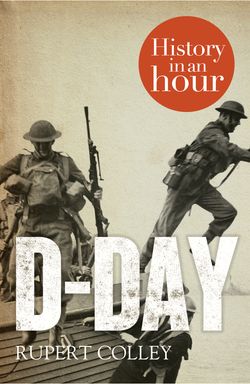Читать книгу D-Day: History in an Hour - Rupert Colley - Страница 10
Hobart’s Funnies
ОглавлениеA ‘Crab’ tank in action.
The British, under the inspiration of Percy Hobart, Bernard Montgomery’s brother-in-law, invented various aids for the landings, ‘Hobart’s Funnies’, to help advancing soldiers get on and across the beaches. Perhaps the most commonly used was the amphibious tank, the ‘Duplex Drive’, or DD, nicknamed by the troops as ‘Donald Duck’. Equipped with propellers and encased within a ‘flotation screen’, it could, having been launched from a landing craft several miles out, ‘swim’ ashore, where it would shed its screen and operate as an ordinary tank, providing vital assistance to the first waves of infantry soldiers attacking the beaches. The slow-moving Crab tank was equipped with a rotating drum with heavy, flailing chains that could detonate mines in its path. There were tanks that could unroll long, canvas paths so that vehicles behind wouldn’t sink into the sand; tanks that carried flamethrowers, and waterproofed tanks capable of diving to depths of nine feet to remove broken-down vehicles or push away ones that had come stuck; and tanks loaded with ramps that could act as mobile bridges. The ingenuity was stunning. Necessity, with Percy Hobart’s help, was the mother of invention.
(Since May 1941 and the capture of Germany’s Enigma coding machine from a German U-boat, British codebreakers, primarily based in Bletchley Park in Buckinghamshire, had been able to decode and read German communications. In the lead-up to D-Day and during the subsequent Battle of Normandy, the intelligence gleaned from Enigma provided vital information to the Allies regarding German movements and plans, often resulting in modifications to their own plans and allowing Allied troops to be on the ready.)
